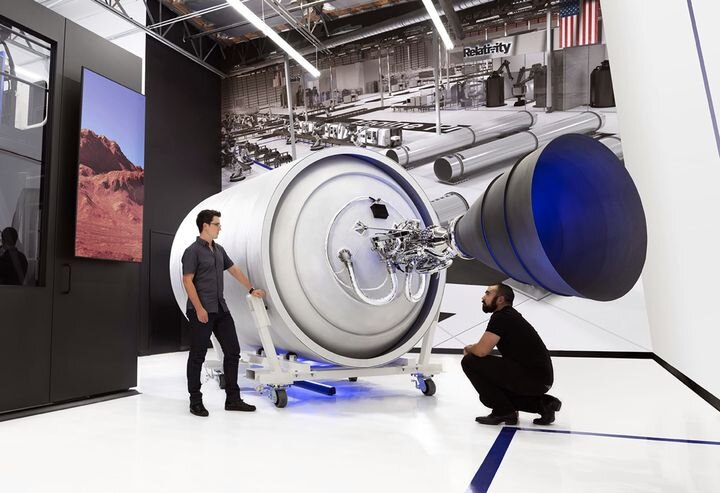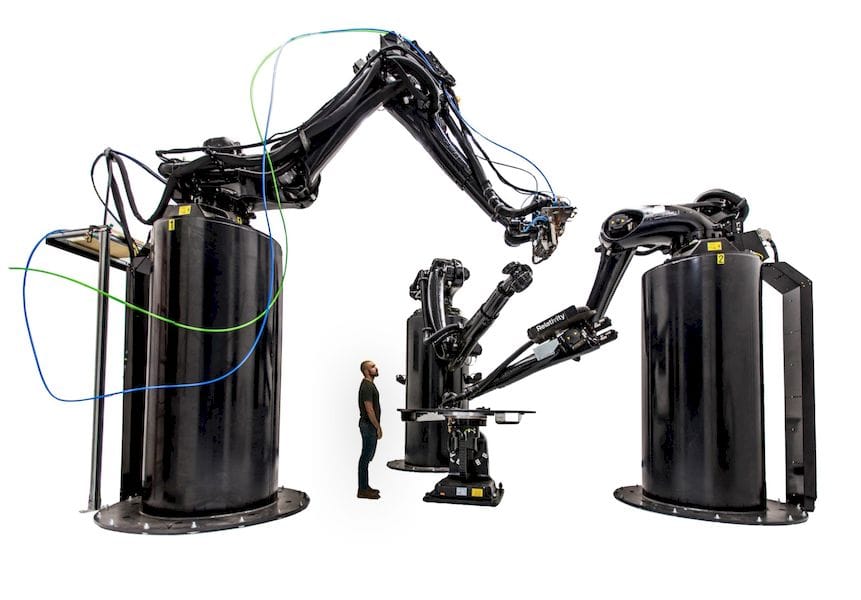
Big news: rocket startup Relativity Space has signed a deal with their fifth launch client, Iridium.
Iridium Satellites
Iridium, if you’re not familiar, was the first global satellite constellation. Their fleet of 66 satellites constantly circle the globe in a distributed configuration so that at any moment there will be several in view no matter where you’re located on the planet. Recently they completed their second generation of satellites.
By the way, their name has an interesting origin story. The original company plan was to launch 77 satellites, and the atomic number 77 corresponds to the element Iridium, hence the name. However, subsequent operational challenges changed the configuration to today’s 66 satellites. Atomic number 66 corresponds to Dysprosium, which is certainly not nearly as nice as “Iridium”.
This allowed them to offer satellite phones and texting services from anywhere on the planet. Typically these services are most useful for individuals operating in extreme environments far from the usual connectivity options.
Relativity Space Background

Relativity Space has been working for several years developing a new type of rocket, one that is entirely 3D printed. To achieve that goal they’ve built a specialized metal 3D printer they call the “Stargate”. This enormous machine is able to very quickly 3D print large metal objects, including their AEON rocket engines.
While other companies have been using metal 3D printing to optimize their existing engine designs, Relativity Space has gone “all-in” on 3D printing and thus can take major advantage of the technology. They say, for example, their rocket design uses “100x fewer parts”.
Their first rocket design, the Terran 1, will be able to deliver a payload of 1250kg to low Earth orbit by using nine AEON engines.
By leveraging 3D printing to the extreme, the company has vastly simplified the build and maintenance costs of Terran 1. Since they are producing the majority of the key parts onsite with Stargate, their supply chains are far shorter and easier to adjust.
All this means the costs of launching using the Terran 1 should be less. In fact, the company lists the price of a dedicated mission to low Earth orbit (LEO) at US$12M. This is a price of US$9,600/kg to orbit.
For reference, SpaceX’s Falcon 9 system carries 22,800kg to LEO at a price of around US$60M, for a unit price of US$2,600/kg. Rocket Lab, another competitor in the space, carries 225kg to LEO at a cost of around US$5.7M, for a unit cost of US$25,333/kg. However, all of these options address different payload categories, so it’s not so easy to compare solely on per kg to LEO costs. To make things even more competitive, SpaceX announced a “rideshare” program where small payloads can piggyback on their launches.
Nevertheless, the Terran 1 should be competitive in a market where there is certain to be plenty of business in coming years as companies seek to dominate the global networking space.
It’s helped along the way by substantial funding, including a US$140M Series C that closed last fall.
Terran 1 Launch
There were and are many challenges for Relativity Space.
One was the launch facility, as the company has yet to launch a rocket. While the company intends to make use of Cape Canaveral in Florida, they’ve also announced they’ve signed a deal to make use of California’s Vandenberg Air Force Base. This facility has been host to several launches in recent years, particularly those that involve polar orbits. The Vandenberg facility will allow Relativity Space to launch into a much wider variety of orbits than Cape Canaveral, which is restricted to eastward-direction flights only.
Another huge challenge for Relativity Space is proving the performance and reliability of their launch system. Companies testing new rockets typically fail not once, but several times before they work out the bugs, and it’s quite possible Relativity Space will undergo a similar phase.
However, due to their 3D printed parts we may find their system is more reliable: complex 3D printed parts do not have seams that could spring leaks or fail, as is the case with conventional rocket engines composed of dozens of parts that must be bolted together.
Relativity Launch Service Agreements
The Iridium announcement represents the fifth launch service agreement (LSA) for Relativity.
Other LSAs announced this year include:
- Spaceflight, with whom Relativity plans “a first launch, scheduled for Q3 2021, with options for additional rideshare launches in the future”
- Telesat, “the renowned global satellite operator, to support their LEO constellation” through a multi-launch contract
- mu Space, “the innovative Thai satellite and space technology company, to launch their first LEO satellite”
- Momentus, to launch Momentus’ small and medium satellite customers, with a first launch slated for 2021 and “options for five additional launches”
Relativity Space says their first launch for Iridium will come “no earlier than 2023”.
I am quite interested to see how they fare in this venture, as a success could provide additional impetus to use of 3D printing in aerospace. Should their launches succeed, the lowered operational cost approach through 3D printing will also be proven, along with the rocket system itself.
Via Relativity Space
